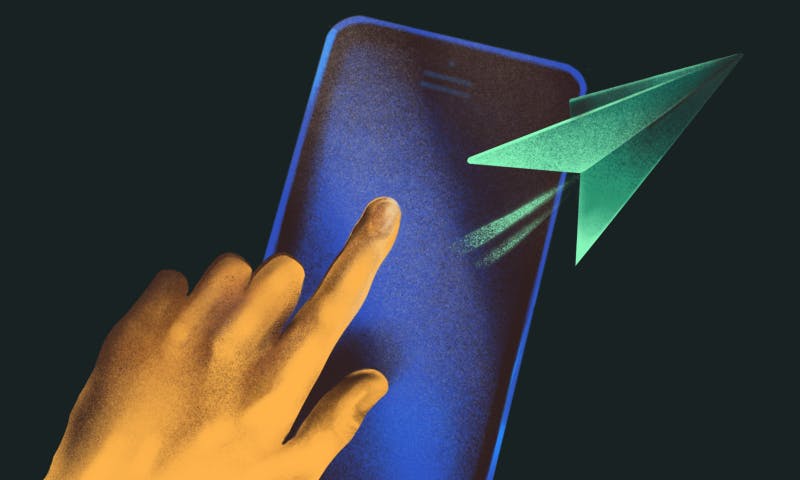Stop leaving money on the table because of payment failures. Learn how to automatically reduce payment failure and recover customers.
You've read the numbers. It costs five times more to acquire new customers than to retain existing ones. Churn is as high as 40% in B2B SaaS. And despite these figures, most companies do not have a customer retention strategy.
A retention strategy should start with numbers. Your company's numbers. What's your churn rate? And what percentage of churn is involuntary? The most common cause of involuntary churn—Failed credit card payments.
Involuntary churn happens when a customer unintentionally drops a subscription because of an error in the payment process, such as expired cards, insufficient funds, or communication errors. These errors can make up as much as 40% of a company's churn. Reducing involuntary churn should be the cornerstone of any customer retention strategy.
What are failed payments?
Failed payments, or payment failure, are attempted card transactions that don't succeed due to some kind of friction in the payment process. In other words, someone has tried to make a purchase but something in the system set up by the vendor to take their payment has prevented the purchase from completing, potentially costing the vendor that sale, or resulting in a subscribed customer churning involuntarily.
Failed payments: The #1 cause of involuntary (delinquent) churn
According to a recent study, close to 35% of all transactions fail, which complicates customer relationships and impacts ongoing revenue. Often customers are unaware that a payment has failed and are frustrated when they no longer have access to their services. It isn't until they contact customer support that they become aware of a problem with the transaction.
For example, a collaborative tool stops working. Employees cannot access documents for review or updates. Teams are unable to share project schedules. Critical purchase orders are delayed because they cannot be accessed. The company is in chaos until someone determines the tool is not working and calls customer support. Eventually, the failed payment is discovered and corrected. The company is operational again, but they've lost confidence.
With failed payments being the primary contributor to involuntary churn, subscription-based companies need to ensure that a retention plan includes a payment recovery strategy that addresses the common reasons for payment failures. Learning churn rate formulas for calculating churn is recommended too.
Common reasons for payment failures
Payments fail for multiple reasons—over 130, in fact. Every time a payment fails, a reason code is given. The codes may be generic, such as System Error, or specific, such as Invalid CVV. Reason codes are intended to help merchants and cardholders understand why a payment failed. Unfortunately, the reasons aren't always clear-cut with many transactions failing for multiple reasons.
1. Broken payments process
System-related errors indicate that the authorization process failed. For example, communication lines were down, so the transaction could not be sent or the response could not be received. Other possibilities include:
- Authorizer Unavailable. The cardholder's credit card company is offline, meaning the authorizer is not available to approve or decline a transaction.
- No Response. The authorizer did not respond to the request within the designated time.
- Unknown Error. This generic code simply means that something went wrong in the processing of the transaction. The exact cause is unknown.
These reason codes mean something went wrong in the processing of the card. That doesn't mean the card has expired or flagged. Retrying the transaction is a viable option with these reason codes.
2. Expired credit cards
Payments may be declined for expired cards or incorrect billing information. Your customers may not always remember to update their information. Knowing the card status reason codes makes it easier to identify the problem and help the cardholder correct the issue, so the transaction can be authorized.
3. Insufficient funds
If the cardholder does not have enough money in the account to cover the purchase amount, this reason code may be delivered.
4. Fraud Protection
As fraudulent card usage rises, card issuers continue to tighten their fraud protection capabilities. Sometimes those protections get in the way of authorizing a legitimate transaction.
- Suspected Fraud. Card issuers perform multiple checks on each transaction to reduce the chance of fraud. For example, a transaction is completed in a clothing store in California. Within minutes, a second transaction request comes through for a hotel charge in New York. The second transaction may be declined because it's assumed the cardholder cannot be in two places at the same time.
- Merchant Code. Some authorizers deny transactions based on merchant code. Others implement a complex algorithm that looks at merchant code and location as well as prior card activity to determine whether a transaction should be authorized.
- Stolen/Lost Card. When a card is reported as lost or stolen, all transactions will be declined, even those configured as recurring payments.
As technology improves, so will fraud protection. Making sure everything is properly configured can help reduce the risk of an inappropriately declined transaction. Sometimes, legitimate payments are caught in the fraud detection process. Knowing the reason can help determine if a retry is possible.
How to recover failed payments
Reducing payment failures takes time that most businesses don't have. It requires an understanding of the reason codes and what options are available to ensure a retry is successful. For many subscription services, failed payments are viewed as a cost of doing business; but, they don't have to be. Here are three tactics to help recover payments.
Reduce friction
Eliminating friction in the payment process as much as possible, is a big factor in reducing failed payments. Make it as easy and quickly as possible for your customer to update their credit card information. Eliminating the need to log in to their account, or call in, will make it more likely that your customer will update that payment information. If it's a tedious process, they'll likely not finish the process and then forget about it.
Pre-dunning messaging
Rather than sending messages after a transaction fails, try sending messages alerting customers to a card that is about to expire. Dunning may not sound like a positive tactic, but done correctly, it can reduce failed payments substantially.
In-app payment reminders
Send in-app payment reminders while cardholders are using the application, including a link to the update page. The cardholder can easily navigate to the appropriate page, make the changes, and return to the app. The process makes it simple to update information without having to leave the application.
Retries
Retrying failed credit cards is one of the basics of battling credit card failures. However, you want to be wise, as there's a limit on the number of retries you can do. Using them too much can trigger fraud warnings and cost you fees. You want to use retries intelligently based on your data.ud detection process. Knowing the reason can help determine if a retry is possible.
Automatically protect against failed payments & reduce churn
As the world of payments becomes more complex, the ability to reduce involuntary churn becomes more difficult. But at Paddle, this is our jam. It's our job to know the ins and outs so you don't have think about it. ProfitWell Retain, by Paddle, is designed to help reduce involuntary churn through a number of features, such as:
Personalized recovery
ProfitWell Retain communicates with customers in their language incorporating cultural preferences for a personalized experience. Using custom algorithms, Retain is continuously learning how to personalize interactions.
Targeted Retries
After years of experience and millions of data points, ProfitWell Retain knows the best times to retry a failed transaction. Whether it is time of day or reason code, ProfitWell Retain's analysis makes sure the retry attempts are used wisely to ensure a positive response.
Compliance
All solutions are PCI-compliant for card-based payment options. Paddle's SOC2 certification means our security has been audited and approved by certified third parties. The system is continually monitoring for possible threats. It provides audit trails and includes forensics to help improve the system's capabilities.
Industry leader
Retain is an industry leading solution in payment recovery and customer retention. By using proprietary algorithms, we ensure a personalized experience for your customers. With tactical retries and multiple payment options, ProfitWell delivers an impressive recovery rate of over 50%. If you're interested in reducing involuntary churn, improving recovery percentages, and creating a positive customer experience, contact us to learn how we can help.
Payment failure FAQs
Failed payments are the biggest cause of involuntary churn. However, there are steps you can take to significantly reduce involuntary churn and start increasing that recovery rate.
What causes credit card failures?
Credit card failures occur because of system errors, faulty card information, and fraud protection algorithms. Each of these categories has specific reasons for declines, such as expired card or inaccurate billing information.
What is dunning?
Dunning refers to the process of repeatedly contacting a consumer for the collection of a debt. This usually occurs after a credit card has declined.
How to fix a failed payment?
- Retry the credit card, but use your retries wisely.
- Have a pre-dunning strategy in place to notify your customers that the billing formation needs updating.
- Reduce friction by making it as simple and quickly as possible to update their information.
- Automate your payment recovery efforts with ProfitWell Retain. Let us do the work for you.
How many times can a bank retry payment?
Card payments may be retried up to 15 times in a 30-day period, except for Category 1 declines.




